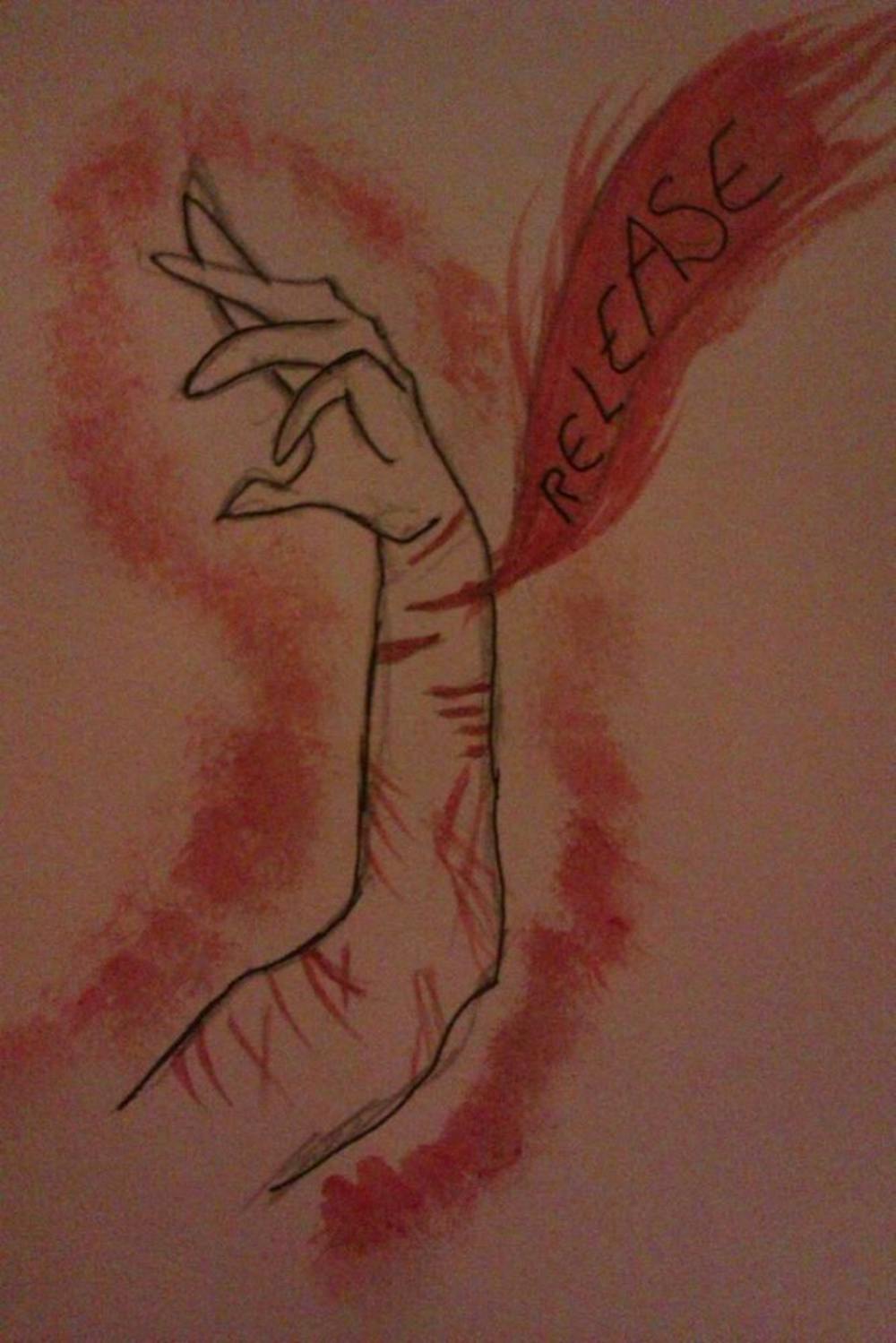When I first pitched this idea to my editor, he had a bewildered look on his face. The concept of painting with bodily fluids seems to be far-fetched to most.
But my timing is right: Halloween is right around the corner. And while I was in the process of stringing this blog together, I found out that artist Vincent Castiglia is opening an exhibit in New York entitled “Resurrection” with paintings made of his own blood.
While I did not interview Castiglia himself, I did manage to find several amateur artists on deviantART who use the controversial medium. They were very enthusiastic to let me catch a glimpse into their world. Surprisingly, most were younger than you and me. Because so many of them were willing to share their insights, this will be a series.
“For me, blood painting is a really personal way of expressing yourself, and I think that’s my favorite thing about it,” says artist Skaret, 17. “I use my own blood for my art, and I don’t think there’s a better way to feel connected to your creations.”
Many blood-painters use their own plasma for their creations-- some with accidental injuries and some by intentionally cutting themselves.
For 15-year-old Tasmin Shadrake from the UK, blood painting is therapeutic.
“I know it’s not very nice but the fact is that I self-harm and I think to myself, might as well not waste the blood,” she says. “I personally feel that by using blood in my vent art, I use the emotion itself as a physical thing to cope with my emotions.”
Kalina Reger from Utah, 21, has similar thoughts.
“I don’t encourage cutting yourself, but I’ve had a problem with cutting for over a year now so I cut myself anyway," she says. "Using my blood as an art medium actually helps me cut less than I actually would.”
What are the advantages and disadvantages to working with the medium?
Skaret: “I think that the most obvious disadvantage is the color palette. You can only work in shades of red, while using acrylic, you can use all the colors you want to. Another disadvantage is the fact that people will think that you are crazy, or won't really appreciate the art because, apparently, blood is a social taboo.
As for the pros, if you get the blood from yourself, that means it's free. You don't have to spend money on expensive art material. Another positive point is that you get experience from working with different media, and experimenting means improving as an artist.”
Kalina: “Pros: It's a beautiful color. Even after it completely oxidizes it's still a nice color. It also has a shiny almost metallic quality to it after it dries. It's much easier to show emotion in a drawing when you use blood, especially if you use your own. It allows for a lot of experimentation. You learn a lot about the properties of blood.
Cons: It's difficult to obtain, especially if you're unwilling to use your own. When people find out you use blood they can be pretty disgusted and think you're insane. It's difficult to show shading. It doesn't mix well with other mediums.”
Tasmin: “I'd say that it behaves very much like paint and is pretty easy to use if you know how to paint well. However, once it dries it tends to change colour from a bright sort of red, depending how much you use to a dark brown, which isn't too lovely, but I tend to take the picture before the colour changes.”
To be continued. More on these and other blood-painters Thursday.
Do you know of any interesting art, entertainment or crafts you’d like me to cover? Tweet me at @DamianoAlec or email me at Alec.Damiano@asu.edu. To see some of my artwork, click here.






